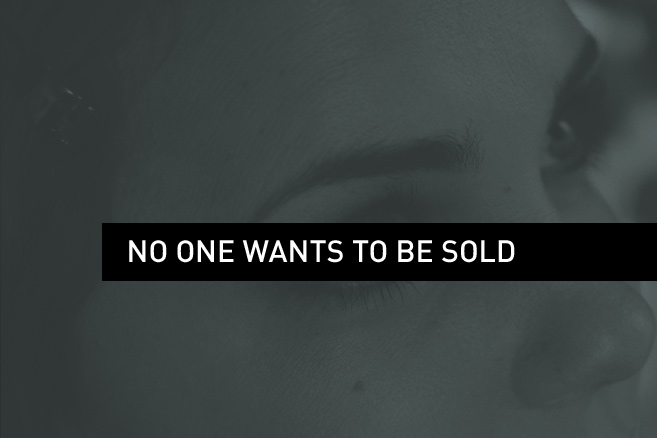FACT 1: NO ONE WANTS TO BE SOLD.
Nothing creates resistance like knowing you’re being sold.
FACT 2: PEOPLE CAN’T REALLY BE PERSUADED.
Persuading is basically selling a point. Go back to Fact 1. Think about the trajectory of most disagreements:
Jack: I think this.
Jill: I disagree.
Jack: I accept your disagreement, but here’s why I think this.
Jill: I accept your thinking that, but I still disagree.
Jack: I accept your continuing disagreement, and I will say that you have a point to be polite and end this discussion, but I am not retreating from my original point, and I disagree even more, but I won’t voice it, so we can stop talking about this.
Jill: I can see that you don’t really accept my position, even though you say I have a point, and therefore I do not accept your desire to end this discussion, and I would like to reiterate my point even more strenuously.
Jack: I tried to be nice, but I no longer wish to do so, because I gave you an out by being polite, but now I will say what I really think, which is that your point is utterly wrong, and really quite foolish.
And so it goes. Persuasion doesn’t really work. Or, maybe a better way to say it is that sometimes it might, but you’re better off putting it out of your mind if you’re trying to sell. More times than not, agreements, nods, and affirmations are just a polite way for two people to see the world differently without the confrontation. So what is the out? We have a product. We have to sell it. But we know we can’t sell it. And we know we can’t persuade.
Reframe. Remember, very often, it’s not that someone can’t be a happy client and a good match. It’s that they’re not seeing eye to eye, because they don’t share your vocabulary, and you are not creating meaning on their terms. This is wholly different from being a poor match. So let’s move on to the final fact.
FACT 3: WE CAN CONVINCE OURSELVES
Most people don’t really know what they think about most things. We only have so much exposure to things that aren’t our areas of expertise, after all. We drive a car, but most people don’t know what’s under the hood. We use a computer, but how many people know how it ticks? In fact, forget computers. How many people can even build a pencil? Or pencil lead?
So it’s fair to say most people don’t know what goes into a picture. And it’s not their job to find out. It’s ours to let them in on it.
The key is to let people fill in the gaps themselves.
For example, what happens when you go to a wine tasting? Does someone tell you how something tastes? Or do they explain what flavors and scents to look for and let you experience it for yourself? In fact, for those who haven’t done a wine tasting or any other tasting, they not only tell you what to look for and let you find it, they ask you to describe it yourself. Because they know that once you see it with your own eyes (or taste it with your own tongue) and you become aware of that distinction, you’re changed forever.
Yet most business owners spend their time selling by trying to convince and tell and persuade. You can’t make an observation for your client. That’s not an observation. You’re not trying to connect the dots for them. You’re trying to find a way to let them connect the dots themselves.
Or, to put it another way, you’re trying to help people fill in the gaps and let them convince themselves. Gaps that you know exist that they don’t. And by choosing what gaps you fill in, you can gently direct people in a direction that lets them understand the value behind what you do. Once they come around to that themselves, they’ll never forget the importance of what you do.

PREACH! Very well said. Sharing your value by education is more effective than just stating it!